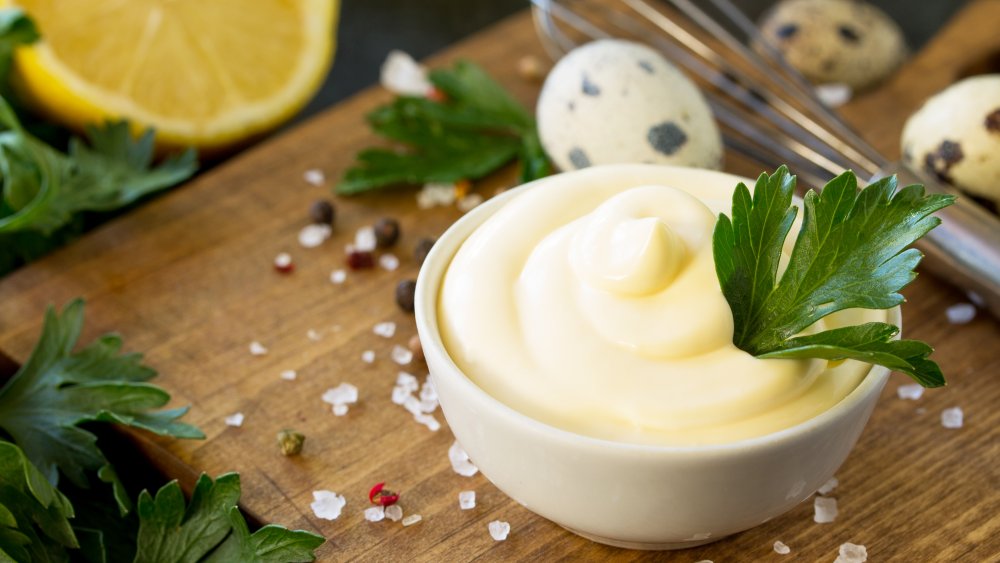The Real Difference Between Aioli And Mayonnaise
Spoiler alert: Mayo and aioli are not the same thing. Yes, on bistro sandwiches, they often appear interchangeable — creamy, white, and slathered thickly on a slice of fresh bread. Thanks to the addition of flavor punches like sambal, paprika, and black garlic, aioli has gotten a reputation as amped-up mayo with a stir-in of spice.
As Bon Appétit explains, mayonnaise and aioli share a common origin story in a technical sense, but with different ingredients. You see, both mayonnaise and aioli are emulsions. This culinary term refers to the forced combination of ingredients that don't really want to play nice. Commonly, the process of emulsifying merges an oil with a water-based ingredient.
To make mayo, a neutral-flavored oil, like canola, is whisked with egg yolk (via The Spruce Eats). Through vigorous stirring, the oil is broken into little droplets and becomes suspended in the yolk, thanks to naturally-occurring lecithin within the egg. Oftentimes, an acid (like vinegar or lemon juice) is added to the mix. Salt is a given. Pepper and dry mustard are also common ingredients. Adding other flavors to mayonnaise, well, just makes flavored mayonnaise.
Why aioli and mayo are often confused
Aioli, historically, is an entirely different emulsion. Traced back to the cuisine of Spain during the first century A.D., aioli is actually a thick garlic sauce completely devoid of egg (via Chowhound). Aioli's seemingly similar consistency is instead a result of creamed garlic. When painstakingly mashed with olive oil, aioli becomes smooth and pale — and looks an awful lot like mayo.
The addition of an egg to the garlic paste was a result of French influence. Because making a creamy garlic emulsion takes time, egg was added to aioli to achieve a silky consistency.
Bon Appétit says that traditional aiolis are scarce on restaurant menus because they're labor-intensive. Purists maintain that a mortar and pestle are as necessary to create a true aioli as olive oil and garlic. The Mediterranean aioli of old is also prone to "breaking" or separating — an undesirable trait for chefs.
So what exactly is the truffle aioli you've ordered with your fries? Today, according to Bon Appétit, aioli usually just refers to "mayo, plus something else." So, it might just be mayonnaise with a splash of truffle oil. Perhaps it includes garlic as a hat tip to the past. In any case, it's bound to be fluffy white and delicious.

